India election 2019: The killer air no one's talking about
- Published
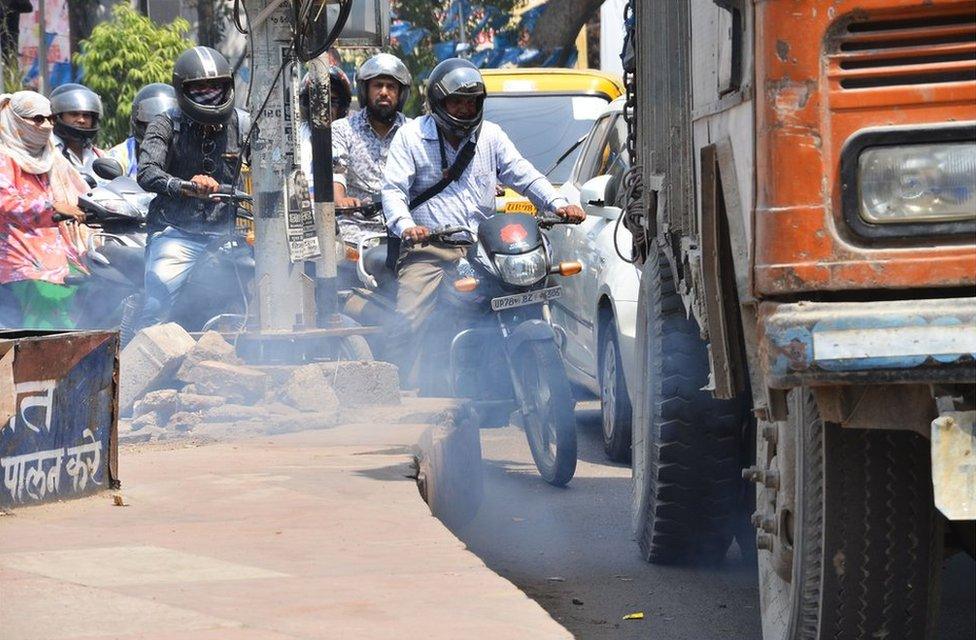

Pollution killed at least 1.2 million Indians in 2017, but as the country votes in a general election, is fixing the bad air any party or politician's priority? The BBC's Geeta Pandey reports from Kanpur which topped a global list of most polluted cities in the world last year.
Just before the elections were called in March, Prime Minister Narendra Modi visited Kanpur to address a rally for his Bharatiya Janata Party. In April, the state chief minister, Yogi Adityanath, leader of the opposition Congress party Rahul Gandhi and two former state chief ministers - Akhilesh Yadav and Ms Mayawati - addressed their own rallies in the city.
Not one of them mentioned pollution - a topic that dominates news and conversations every winter when a thick grey blanket of smog descends on large parts of northern India, rendering the mere act of breathing hazardous.
Indian cities routinely dominate global pollution rankings so it came as no surprise when last May the World Health Organization named Kanpur as the most polluted city in the world.
The rankings were based on 2016 data from the Central Pollution Control Board on the presence in the air of PM2.5 - particles so tiny that they can enter deep into the lungs and make people susceptible to respiratory and cardiovascular diseases.
The safe limit, according to WHO is 25 micrograms per cubic metre although Indian officials put it at 60 - Kanpur's was 173.
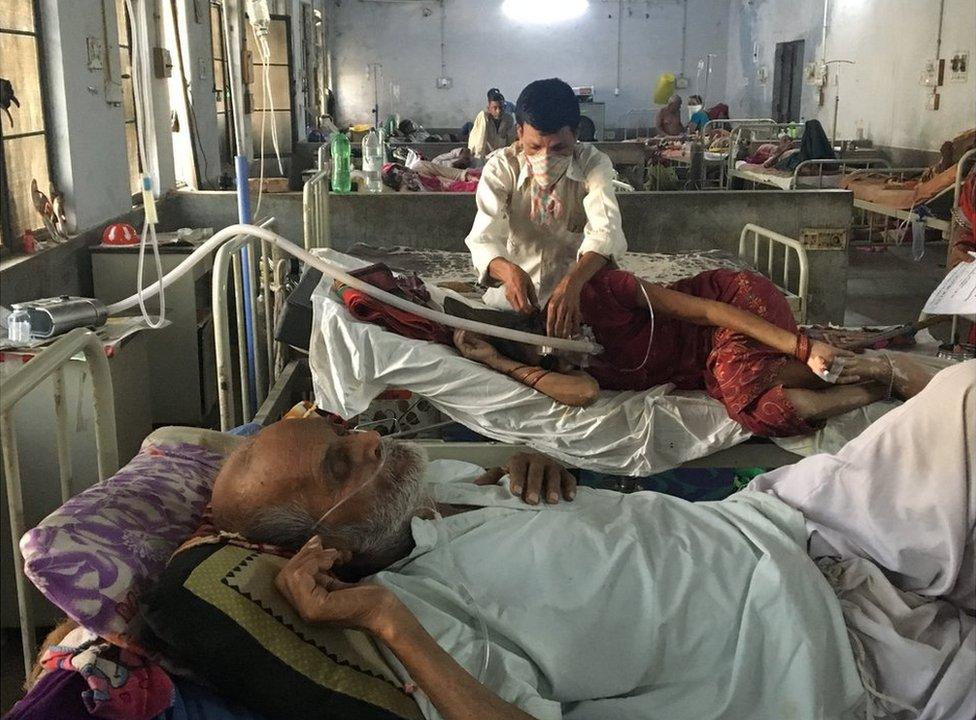
Air pollution is seriously impacting the health of Kanpur residents

Prof Sachchida Nand Tripathi, environmental engineer at the government-run Indian Institute of Technology (IIT) in Kanpur, says it's really "hair-splitting" who takes the top place as the city is not the only one on the list.
"In the top 50, there were 20 plus cities from the Gangetic plains, including Varanasi, Lucknow and Allahabad. Data after data shows pollution is a major problem, the air is very poor."
The major contributing factors to air pollution, he says, are roadside and construction dust, industrial and vehicular emissions, and smoke from burning of crop residue, garbage and solid fuel like wood and coal.
"Together, they are turning the air in our cities toxic, laden with deadly PM2.5 and the larger PM10 particles," he adds.

India votes 2019
India's elections: Why you should care

And these are seriously impacting the health of the citizens, says Dr Anand Kumar, head of the pulmonary department at GSVM Medical College, Kanpur's biggest hospital.
"In 2015, we saw 40,000 patients a year. Last year that number rose to 60,000. All the cases coming here can be co-related to pollution in some way."
The "commonest complaint" he hears is of breathlessness. The other symptoms are "sore throat, tracheal infection, heaviness in the chest and unexplained cough that does not respond to regular treatment". And the most at risk are those who work outdoors such as traffic constables, drivers, cleaners, roadside vendors and the poor living by the roadside.
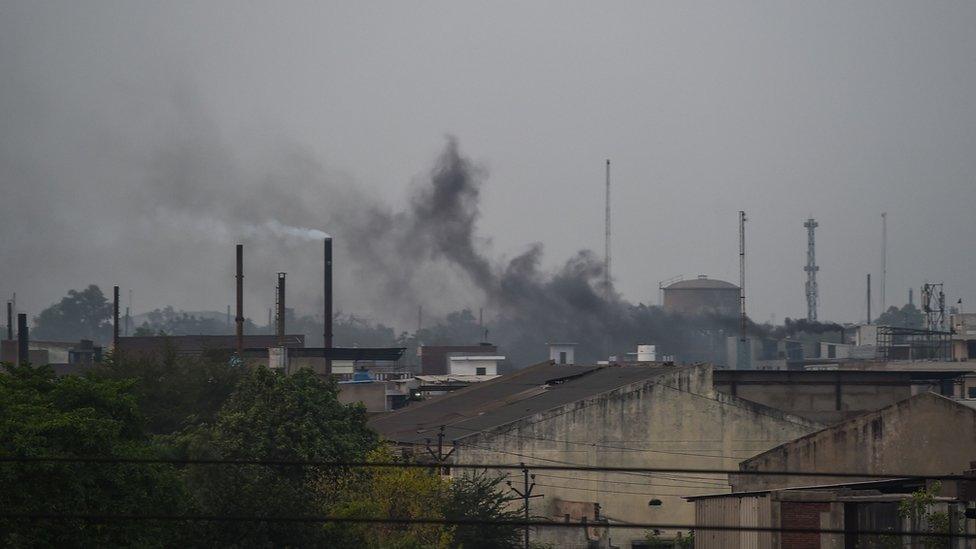
Industrial pollution is a major contributor to foul air in Kanpur
In his office, he looks at the X-ray of Seva Ram Parihar, a 50-year-old auto-rickshaw driver, who's asthmatic and has been under treatment for "eight-nine years for breathlessness". His condition has worsened in the past month.
"He's been diagnosed with chronic persistent bronchial asthma. It's an occupational disease, he's exposed to diesel fumes and other pollutants in the course of his work," Dr Kumar explains.
I ask him what he can do to help Mr Parihar? Not much, he says: "We can only give him the best care, prevent further exacerbation. He has no other options."
Dr Kumar takes me on a guided tour of the outpatient department, where his team of 19 doctors sees 200 to 250 patients daily, and the respiratory ward where seriously ill patients are curled up on beds, many connected to oxygen pipes.
The room is bleak, its walls disfigured with peeling paint, tubelights shine harsh light on the beds, and noisy fans provide some respite from the sweltering heat.
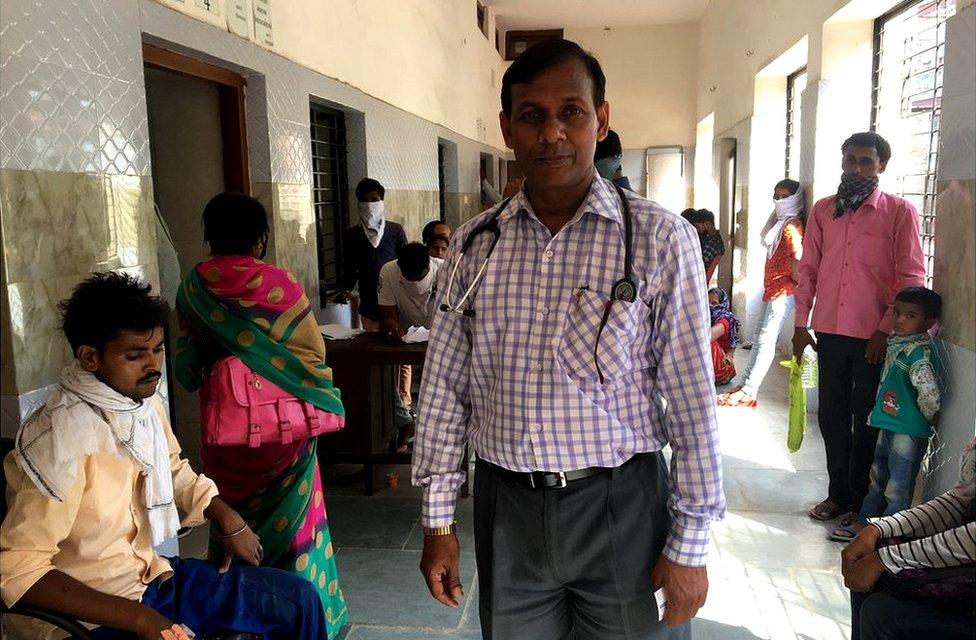
Dr Anand Kumar says the "commonest complaint" he hears is of breathlessness

It's crowded in here - all the beds are taken, there are extra patients on stretchers and on mattresses thrown on the floor.
Almost all the patients here are poor, unable to afford expensive private medical care and the air is heavy with their pain and despair. Most of the patients here are dependent on oxygen to continue breathing.
Like Nasreen Begum, who has been in and out of the hospital since 2015. "She was discharged just last month, and now she's back again," says Dr Kumar.
Along with the number of patients, he says the "severity" of the symptoms too has grown in the past four to five years and children are most susceptible to falling ill.
"Even very small children are nowadays being diagnosed with bronchial asthma. And earlier we'd see children recover in five to seven days, now it's two weeks."
The incidence of lung cancer too is growing - earlier it was found only in those above 55 years, now people in their 40s are getting it, he says, adding that the situation is worsening quite rapidly.
Kanpur's chief pollution officer Ghanshyam (who uses only one name) admits that air pollution remains high and a cause of worry.
But, he says, ever since Kanpur topped the WHO list, a lot of measures have been taken to tackle pollution.
"We are trying to stop farmers from burning crop residue, sanitation workers are being asked to stop burning garbage, guidelines to control dust are being implemented, and vehicular emission is being checked."
He says a committee has been set up under the district magistrate with representatives from 17 government departments. They meet regularly to discuss problems and monitor progress. "It's not a problem we can solve alone," Ghanshyam says.

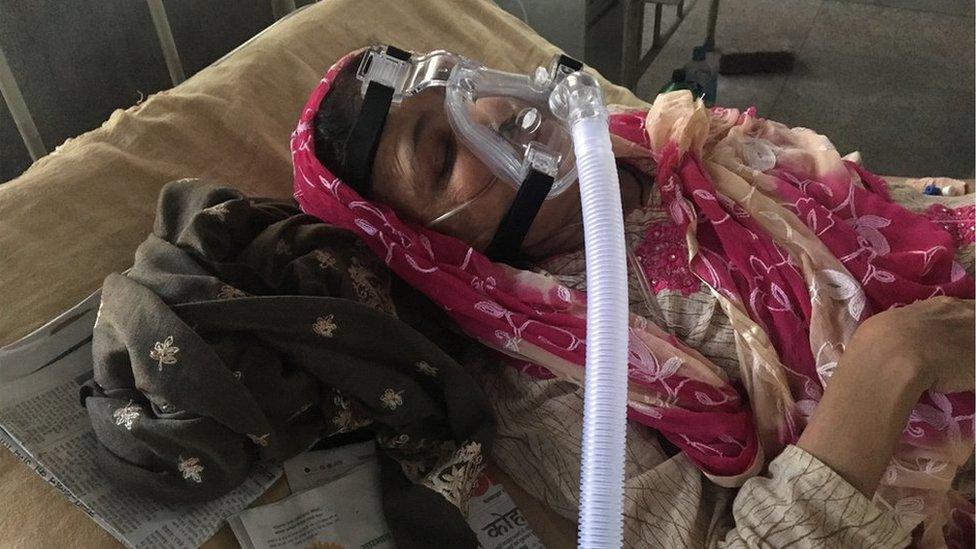
Nasreen Begum has been in and out of the hospital since 2015

His colleague, assistant environmental engineer Dr Anil Mathur, says what they need the most is "better diagnosis" - to understand the source of air pollution.
The city has only one centre to monitor PM2.5 and a case has been made to set up five more such centres at different locations to generate better data.
The request is yet to be granted, but better data is something that Prof Tripathi could help with in the near future.
The Indian Institute of Technology has installed lots of low-cost monitors in Kanpur, Delhi and elsewhere in India. They also have programmes to monitor aerosols, real-time dust reading and radiation levels and by the end of 2019, he says, "we should have some answers".
For instance, they would be able to tell how much pollution is being contributed by local sources and how much is coming from outside the city and how much is generated by biomass fuel or traffic. Then new policies can be formulated or existing ones tweaked accordingly, Prof Tripathi explains.
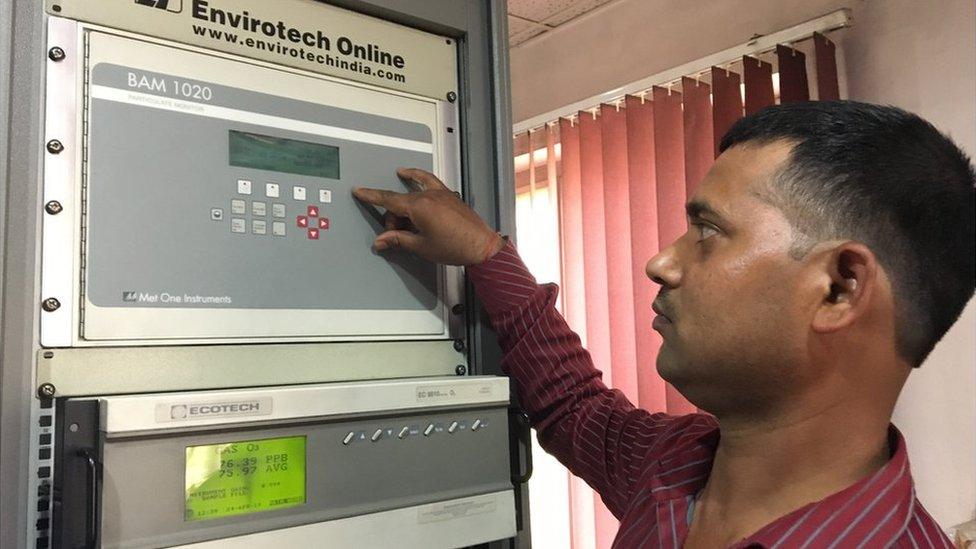
At the lone pollution monitoring system in the city, operator Rajesh Gupta checks the machine that measures PM2.5

In January, the government launched the National Clean Air Programme which aims to have breathable air in 100 cities in five years. Prof Tripathi, who is advising the government on the programme, says earlier the mindset was that environmental issues can impede sustainable development, but slowly that notion is changing and there is the realisation that the two can - and must - co-exist.
"There's realisation that bad air is impacting human health so the government is forced to make it their agenda. But everyone - the federal government, the states and the cities - will have to work together and consistently to make a real difference."

Read more from Geeta Pandey

When I visit the lone pollution monitoring system in a crowded market in the city centre, the machine shows a reading of PM2.5 of 67. Operator Rajesh Gupta says a day earlier it was 78.
In the winters, he says, the air quality is "very bad", sometimes "critical - with PM2.5 averaging 400 to 500, on occasion even hitting 600".

A huge breach in the sewage pipeline means untreated effluents are flowing into the river

It's not just the air. Pollution has also blighted a stretch of Ganges, India's holiest river, in Kanpur, says environmental activist Rakesh Jaiswal.
The city of four million plus people is an industrial hub. It is home to more than 400 tanneries and generates large amounts of sewage and industrial effluent and a lot of that goes untreated into the river.
"The city produces 430mld (million litres per day) waste water. Only 250mld is treated before being released into the river," he says.
The run-up to the start of the Hindu festival of Kumbh Mela in January saw some relief.
Millions of Hindu pilgrims bathe in the river in the city of Prayagraj (formerly Allahabad) during the festival, 200km downstream from Kanpur.
The authorities ordered tanneries shut; effluent from the city drains was sent to treatment plants; and more water was released into the river from upstream.

Prof Sachchida Nand Tripathi says the air is very poor in a number of Indian cities
The festival ended in early March and the river water is polluted again.
Mr Jaiswal takes me to Dapka Ghat to show a huge breach in the pipeline that carries sewage from Sisamau, Kanpur's dirtiest drain, to a treatment plant in Wajidpur.
Untreated effluents from the drain used to flow directly into the Ganges before the festival. The pipeline breach means it's flowing again into the river untreated.
In the past 30 years, 310bn rupees ($4.4bn; £3.4bn) have been spent on cleaning the Ganges, but as we stand there watching the murky greyish liquid gushing into it, the river looks more like a stinking stream.
At one of the poll rallies in Kanpur, I ask several of the attendees if they think pollution should be an election issue?
Durga Prasad, a day-wage labourer, says he worries about the impact of pollution.
"It affects everyone, rich, poor, man, woman and child. But no-one has made it an issue," he says, "and let me tell you, no one will."
- Published18 November 2018
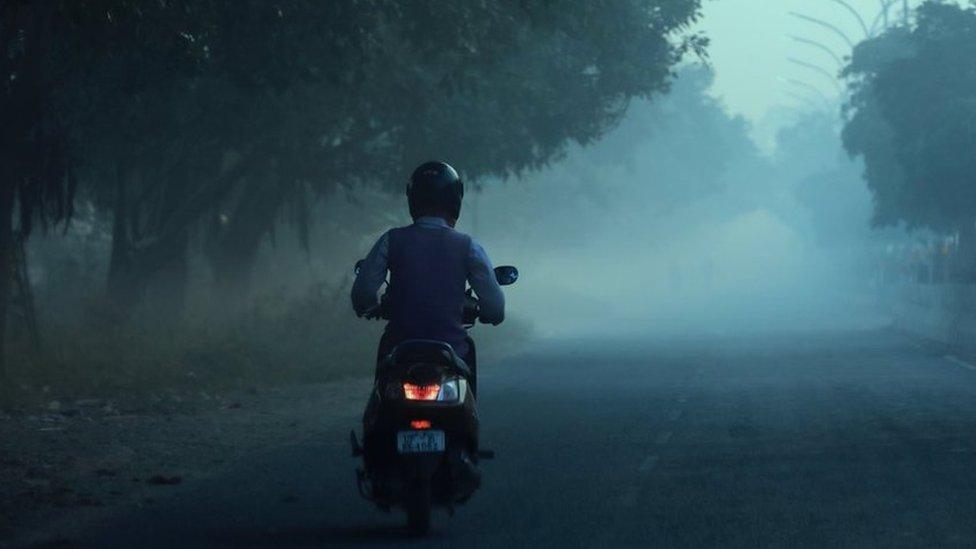
- Published9 November 2018
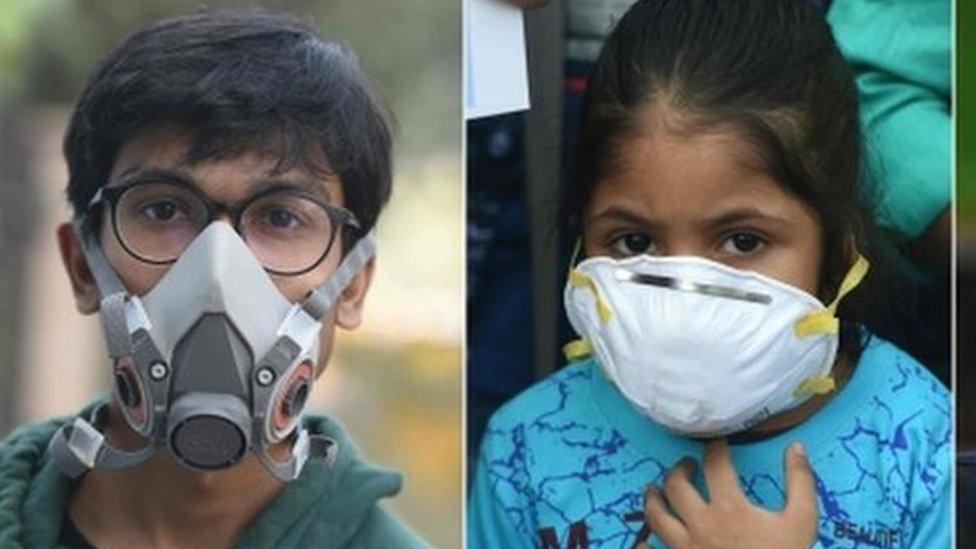
- Published23 October 2018